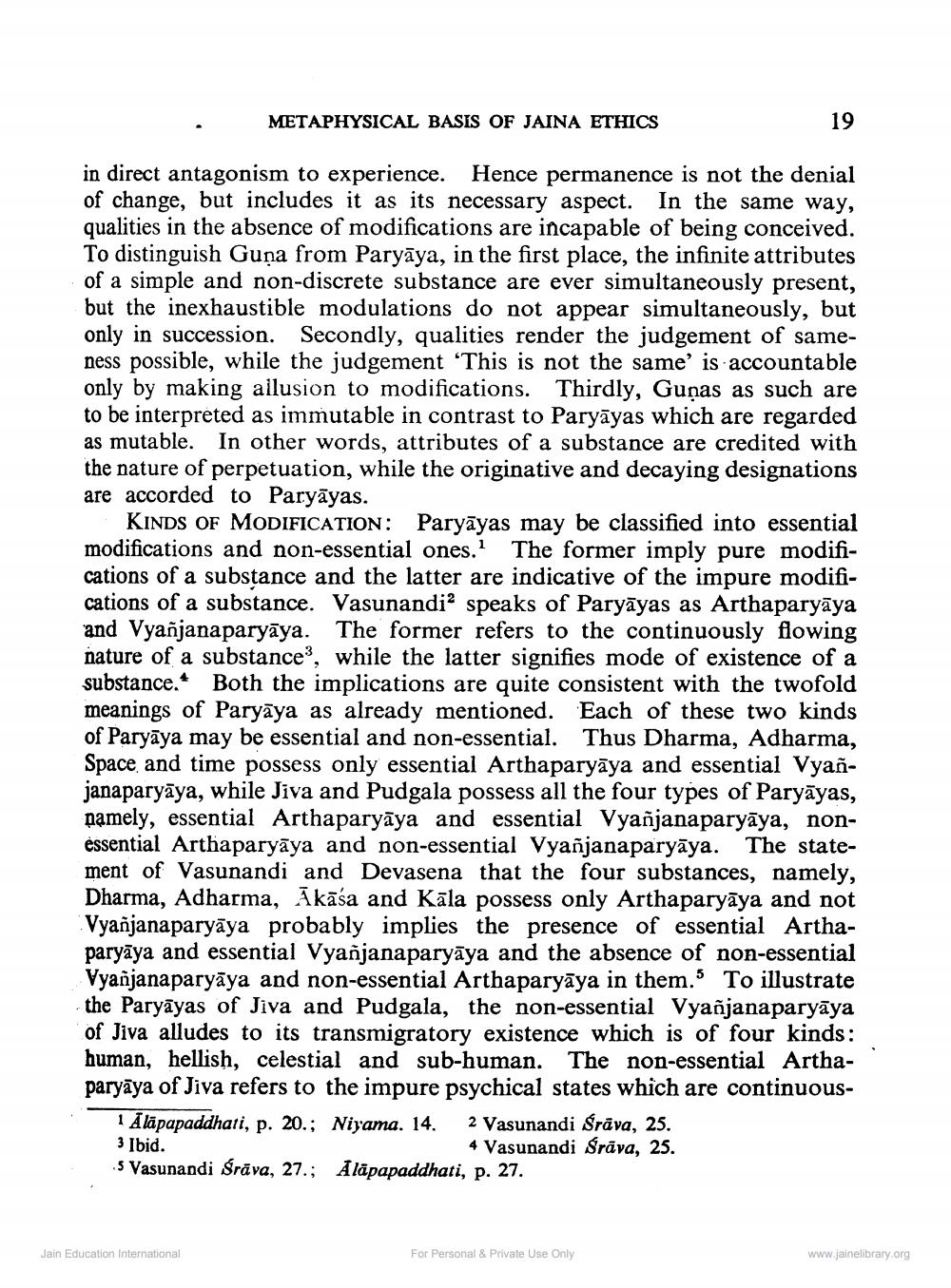________________
METAPHYSICAL BASIS OF JAINA ETHICS
in direct antagonism to experience. Hence permanence is not the denial of change, but includes it as its necessary aspect. In the same way, qualities in the absence of modifications are incapable of being conceived. To distinguish Guṇa from Paryaya, in the first place, the infinite attributes of a simple and non-discrete substance are ever simultaneously present, but the inexhaustible modulations do not appear simultaneously, but only in succession. Secondly, qualities render the judgement of sameness possible, while the judgement 'This is not the same' is accountable only by making allusion to modifications. Thirdly, Gunas as such are to be interpreted as immutable in contrast to Paryayas which are regarded as mutable. In other words, attributes of a substance are credited with the nature of perpetuation, while the originative and decaying designations are accorded to Paryayas.
KINDS OF MODIFICATION: Paryayas may be classified into essential modifications and non-essential ones.1 The former imply pure modifications of a substance and the latter are indicative of the impure modifications of a substance. Vasunandi speaks of Paryayas as Arthaparyaya and Vyañjanaparyaya. The former refers to the continuously flowing nature of a substance3, while the latter signifies mode of existence of a substance. Both the implications are quite consistent with the twofold meanings of Paryaya as already mentioned. Each of these two kinds of Paryaya may be essential and non-essential. Thus Dharma, Adharma, Space and time possess only essential Arthaparyaya and essential Vyañjanaparyaya, while Jiva and Pudgala possess all the four types of Paryāyas, namely, essential Arthaparyaya and essential Vyañjanaparyaya, nonessential Arthaparyaya and non-essential Vyañjanaparyaya. The statement of Vasunandi and Devasena that the four substances, namely, Dharma, Adharma, Akāśa and Kala possess only Arthaparyaya and not Vyañjanaparyāya probably implies the presence of essential Arthaparyaya and essential Vyañjanaparyaya and the absence of non-essential Vyañjanaparyāya and non-essential Arthaparyaya in them. To illustrate the Paryayas of Jiva and Pudgala, the non-essential Vyañjanaparyāya of Jiva alludes to its transmigratory existence which is of four kinds: human, hellish, celestial and sub-human. The non-essential Arthaparyaya of Jiva refers to the impure psychical states which are continuous
Niyama. 14.
1 Aläpapaddhati, p. 20.; 3 Ibid.
5 Vasunandi Śrāva, 27.;
Jain Education International
2 Vasunandi Śrāva, 25. 4 Vasunandi Śrāva, 25.
19
Aläpapaddhati, p. 27.
For Personal & Private Use Only
www.jainelibrary.org




